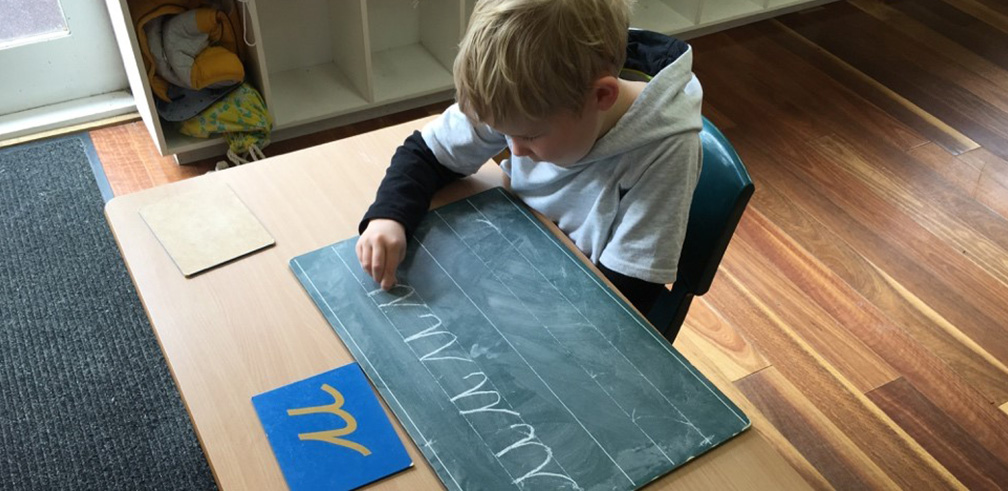Hand, Mind and the Writing Process

Pippa Bettison, Director 3-6 Environment
The 3-6 child is in the midst of the First Plane of Development, which begins at birth and concludes at around age 6. During this plane, the child’s focus is on self-constructing or building his/her personality as well as learning, practising and refining the physical skills in order to become an independent being.
At this time the brain is particularly attuned to learning through the senses. Dr Montessori used the term ‘Sensitive Periods’to describe these crucial periods for learning. They are periods when it is very easy for the child to acquire skills. Four of the 5 Sensitive Periods: Language Development, Order, Movement and refining Sensory Skills are directly related to learning the writing process.
So, in the Montessori environment of the Children’s House, we provide activities which cater for these Sensitive Periods in order that the child can acquire skills with ease.
For writing letters we begin with the Sandpaper Letters. These letters are in cursive script – the curved line is naturally and spontaneously formed by the child before the straight line. Preparation for writing begins and is practised elsewhere in the classroom. The hand is prepared for writing with numerous indirect activities which have small knobs, most readily picked up in one hand using two fingers and the thumb – replicating the pencil grip. We provide activities involving the careful squeezing and controlling of small amounts of liquid. These are all indirect preparation for writing.
Parents can easily include activities like this in home environment - the sorting of small objects such as buttons or using pegs to hang out washing. Manual dexterity is achieved through lots of practise using and refining the muscles of the hand. Through this the child develops muscular memory, a vital aspect of learning at this age. In the classroom we trace Sandpaper Letters to develop the muscular memory in preparation to reproduce letters. These movements are repeated many times. Then we progress to forming those letters on chalkboards in a process of continual refinement until the child is ready to move to pencil and paper. Throughout this period the child is also strengthening and refining the hand using Metal Insets.
In all of this preparation and development the hand is paramount. The hand is the instrument of the brain.
